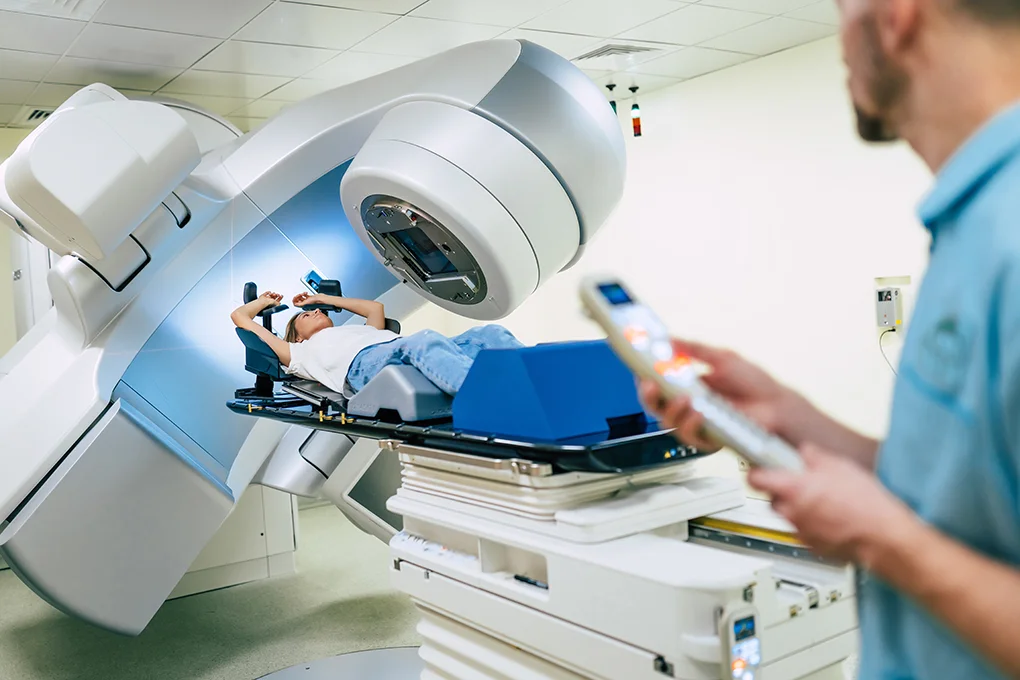Pulmonary Nodules
Pulmonary nodules are small, rounded growths in the lung tissue, typically less than 3 centimetres in diameter.
These nodules are often discovered incidentally during imaging tests conducted for other reasons, such as chest X-ray or CT scan. While the presence of a pulmonary nodule can be alarming, it’s important to note that the vast majority are benign (non-cancerous). However, due to the potential for malignancy, monitoring and further evaluation are often necessary.
Pulmonary nodules are more common than many people realise. They can appear in individuals of all ages, but their prevalence increases with age and among those with a history of smoking. Understanding what pulmonary nodules are, their potential causes, and how they are diagnosed and managed is crucial for ensuring the best possible outcomes.
The lung specialists at North Brisbane Sleep and Thoracic are dedicated to providing compassionate support for respiratory conditions.

Common Causes
Pulmonary nodules an arise from a variety of causes, ranging from infections to malignant growths. Understanding these causes and the associated risk factors can help guide decisions about monitoring and treatment.


Risk factors
Symptoms Associated with Pulmonary Nodules
Pulmonary nodules are often asymptomatic, especially when they are small. Many people with pulmonary nodules may never experience symptoms and only learn of their presence during imaging studies performed for unrelated reasons.
However, some symptoms of pulmonary nodules that can occur include:
- Persistent coughing
- Wheezing
- Shortness of breath
- Chest pain or discomfort
- Fatigue
- Coughing up blood
- Unexplained weight loss and loss of appetite
- Recurring respiratory infections (bronchitis, pneumonia, etc.)
These symptoms are not specific to pulmonary nodules and could be indicative of other respiratory conditions.


Diagnosis of Pulmonary Nodules
Pulmonary nodules are most often discovered during a test or diagnostic procedure for another, unrelated reason. If pulmonary nodules are found, your doctor may recommend further testing to officially diagnosis the nodules.
Monitoring and Treatment
Pulmonary nodules care and management depends largely on their size, appearance, and the patient’s risk factors. In many cases, a conservative approach of watchful waiting is taken, involving regular CT scans typically scheduled at intervals (e.g., every 6 to 12 months) to monitor the nodule. If the nodule remains stable in size over time, it is likely benign.

Treatment options
Surgical Removal: If a nodule grows in size, changes in appearance, or if there is a high suspicion of malignancy, surgical removal may be recommended. This can be done through minimally invasive techniques such as video-assisted thoracoscopic surgery (VATS).
Non-Surgical Treatments: For malignant nodules, treatments may include radiation therapy, chemotherapy, or targeted therapies, depending on the type and stage of the cancer.
Early detection of pulmonary nodules, particularly malignant ones, is crucial for improving outcomes. Regular screenings, especially for people at high risk (e.g., smokers or those with a history of cancer), can lead to the early detection and treatment of potentially cancerous nodules.
Frequently Asked Questions
Contact North Brisbane’s respiratory specialists at North Brisbane Sleep and Thoracic for personalised treatment of pulmonary nodules.
Contact us to book an appointment
Visit us at either our Clayfield or North Lakes location and experience compassionate care in a comfortable environment, tailored to meet your unique needs.

